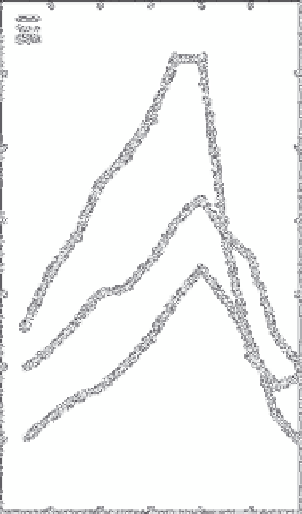Agriculture Reference
In-Depth Information
African countries from 1982 to 2007. The time series show significant interannual variability,
as well seasonal dynamics.
Figure 6.2
shows all the data from Mali, Niger and Burkina from 1982-2007 averaged by
month, showing the clear seasonality in both the food prices and in vegetation index. Changes
in prices can be dramatic, in some years over 100 percent from the minimum prices. Coping
with these significant changes is very challenging for many households.
The relationship between the seasonality of food prices seen in West Africa and environ-
mental variability as observed by remote sensing has two primary aspects. These are the
impact of the growing season and subsequent seasonality in food prices, and the impact of
weather shocks on the price level in a particular year or series of years. These two aspects of
food prices work together to affect food prices. The lower frequency trend is affected by the
interannual variability of the weather, global food prices and the ability of the area to store
grain as well as political and policy shocks. This trend is the component of the time series of
food prices that varies over several years and affects the price level.
Weather shocks affect food prices also by directly affecting local incomes of rural house-
holds in multiple ways. Reduced production directly affects cash income from selling or
trading own crop production, and through the need to replace self-grown household food
through purchases on the market. Incomes are also affected through below average casual
labor availability and reduced demand for services such as transportation, market services and
other aspects of the informal economy that are important for local incomes (Camara, 2004;
The relationship between the seasonality of food prices seen in West Africa and environ-
140
0.5
Burkina Faso
Mali
Niger
0.45
130
0.4
120
0.35
110
0.3
100
0.25
90
0.2
80
0.15
70
0.1
Feb.
Apr.
Jun.
Aug.
Oct.
Dec.
Feb.
Apr.
Jun.
Aug.
Oct.
Dec.
FIGURE 6.2
Averaged monthly millet prices (left) soar before the NDVI (right) peaks, data from
Burkina Faso, Mali and Niger 1982-2007.


Search WWH ::

Custom Search